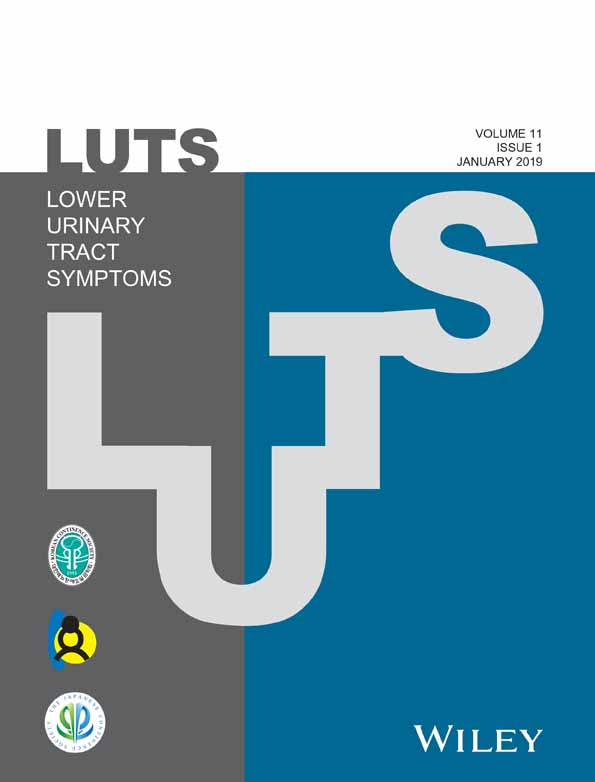Safety, efficacy, and persistence of long-term mirabegron treatment for overactive bladder in the daily clinical setting: Interim (1-year) report from a Japanese post-marketing surveillance study
Abstract
Objectives
To report interim 1-year results from a 3-year surveillance study evaluating safety, efficacy, and persistence of long-term mirabegron for overactive bladder (OAB).
Methods
Patients starting treatment with mirabegron for urinary urgency, daytime frequency, and urgency incontinence associated with OAB were registered and followed up for 3 years. Data were collected on adverse drug reactions (ADR), changes in OAB symptoms, changes in Overactive Bladder Symptom Score (OABSS), and treatment discontinuations. Treatment persistence rates were calculated by Kaplan–Meier analysis.
Results
Eighty-one ADR were observed in 72/1139 patients (6.3%) through 1 year of mirabegron treatment, with the incidence highest during the first month. No significant change in residual urine volume was observed at any observation point up to 1 year of mirabegron treatment. Mirabegron was deemed “effective” in 883/1091 patients (80.9%) at 1 year/discontinuation. Total OABSS was decreased with statistical significance at 3, 6 months, and 1 year, or at discontinuation (P < 0.001 at each time point). Kaplan–Meier treatment persistence rates were 84.8% at 3 months, 77.6% at 6 months, and 66.0% at 1 year. Treatment persistence rates were similar for male and female patients but significantly higher for patients aged ≥65 years (67.3%; n = 908) compared with those aged <65 years (59.8%; n = 231; log-rank test: P = 0.032).
Conclusions
Long-term OAB treatment with mirabegron was well-tolerated, with effectiveness maintained through 1 year. Mirabegron treatment persistence was higher than has been previously reported, and was greater in patients aged ≥65 years compared with those aged <65 years.




